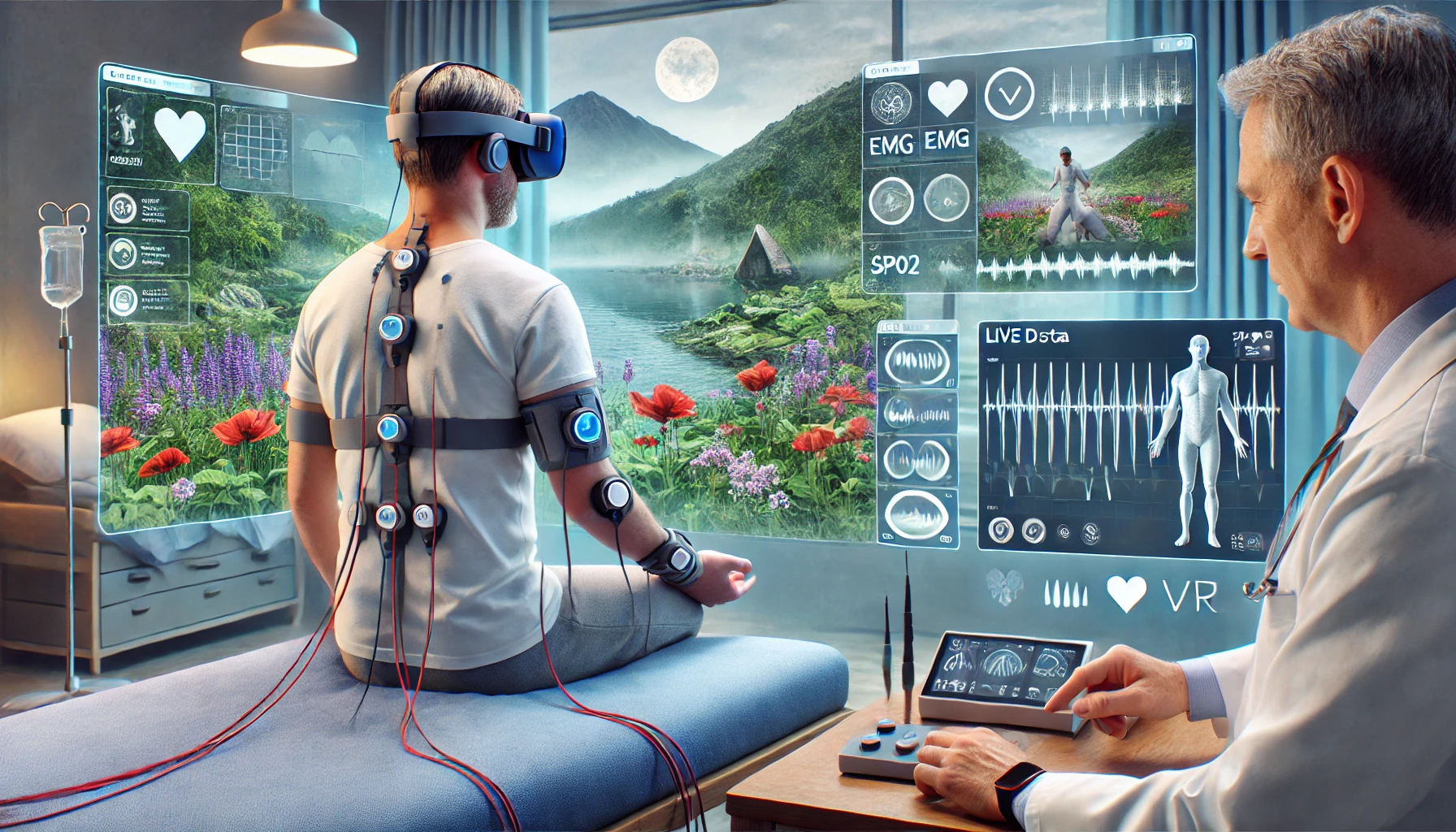
Introduction: The Power of AR/VR in Tele-Rehabilitation
Augmented Reality (AR) and Virtual Reality (VR) are reshaping fields like education, gaming, and medical rehabilitation. Our project focuses on developing an AR/VR platform specifically for rehabilitation and therapeutic support, with an emphasis on Tele-Rehabilitation for Cerebral Palsy. This system offers an engaging, therapeutic environment for patients to complete exercises and activities from the comfort of their homes, monitored remotely by healthcare professionals.
Project Components: Building Blocks of the AR/VR Tele-Rehabilitation Platform
Our system consists of three core components:
- Human-Computer Interface – Enables users to interact with the virtual environment while receiving real-time feedback.
- VR/AR Development Environment – Allows the creation of custom therapeutic scenarios and interactive environments.
- Processing System – Manages data, processes biofeedback, and ensures seamless execution of applications. Project Rationale: Why Focus on Stress and Rehabilitation? In 2021, over 40% of adults worldwide reported significant stress and physical discomfort. By using biofeedback sensors like EEG and EMG, this project integrates mental and physical health into an immersive AR/VR experience. Our aim is to offer an affordable, accessible, and effective solution, especially beneficial for patients in rural areas who lack regular access to rehabilitation centers. Objectives of the Project This AR/VR platform is designed with several key objectives:
- Real-Time Biofeedback Monitoring – Uses sensors to capture heart rate, muscle activity, and stress levels, providing accurate data for therapists.
- User-Friendly Interface – Allows patients to select therapy exercises and set preferences.
- Stress-Reducing Environments – Offers calming virtual scenes, games, and meditative exercises to engage users.
- Enhanced Accessibility – Distributes VR wearable devices for home use, allowing remote access to rehabilitation services.
Scope and Benefits of the Project:
This system brings new capabilities to rehabilitation, especially in stress management and cerebral palsy treatment. With applications in healthcare, it is valuable for:
- Rehabilitation Centers – Providing continuous care to remote patients.
- Healthcare Providers – Offering a tool to monitor progress and guide therapy.
- Individuals – Allowing personal stress management exercises from home.
Methodology: How the Project Works
Our approach combines physiological monitoring with virtual environments designed for therapeutic purposes. The project will:
- Assess Stress Issues – Understand patient needs and integrate suitable biofeedback technologies.
- Develop VR Scenes – Create calming environments, exercise routines, and interactive games.
- Integrate Biofeedback Sensors – Use EEG, EMG, and SPO2 to monitor stress and physical responses in real-time.
- Analyze and Report Data – Use machine learning algorithms to assess stress levels and adjust activities for optimal outcomes. Tools and Technologies: Making It All Possible To bring this concept to life, we are using advanced tools and technologies:
- Unity & Blender – For creating and designing interactive VR/AR environments and assets.
- Biofeedback Sensors – EEG, EMG, and SPO2 sensors to gather physiological data.
- Machine Learning & Computer Vision – Analyze data to track progress and tailor sessions to individual needs.
- Programming Languages – C# (Unity), Swift or Flutter (for mobile applications), among others.
Success Criteria: Measuring Our Impact
We will evaluate success by tracking reductions in stress levels, patient engagement, and satisfaction over time. The ultimate goal is to see an improvement in both mental and physical wellness among users.
Conclusion: Bringing Advanced Tele-Rehabilitation to Patients Worldwide
This AR/VR platform represents a step forward in accessible, effective, and remote rehabilitation. By combining cutting-edge technology with compassionate care, we aim to make rehabilitation easier, more enjoyable, and accessible to patients globally.
http://119.156.30.83:8502/
Collaborators: Riphah Rehab Centre & New Zealand College of Chiropractic






